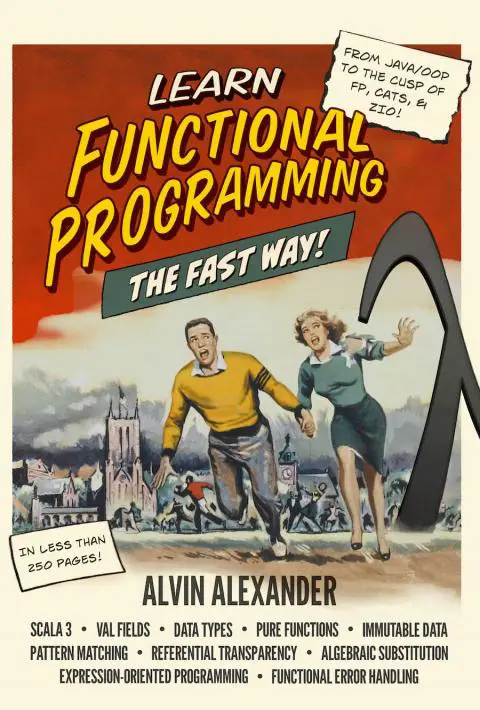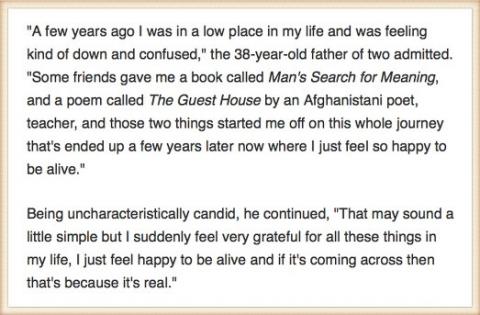Scala, Java, Unix, MacOS tutorials (page 4)
As a brief note today, I was starting to look at a free JSON REST web service that to get stock information, and their JSON for a single stock looks like this:
{
"Global Quote": {
"01. symbol": "IBM",
"02. open": "182.4300",
"03. high": "182.8000",
"04. low": "180.5700",
"05. price": "181.5800",
"06. volume": "3037990",
"07. latest trading day": "2024-04-19",
"08. previous close": "181.4700",
"09. change": "0.1100",
"10. change percent": "0.0606%"
}
}In a Buddha there has never been
Anything that could be said to be there.
Just as a magician
Does not get caught up in his illusions
And therefore by his knowledge
Is not attached to magic forms,
So also the wise in Perfect Enlightenment
Know the three worlds to be like a magic show.
Liberation is merely the end of error.
~ Gampopa
(I saw this quote in the book Be Love Now by Ram Dass.)
If you’re interested in meditation and enlightenment/awakening, the book, I Am That, by Nisargadatta Maharaj, has this terrific conversation, which I have shortened slightly:
M: The Guru is concerned little with the person. His attention is on the inner watcher. It is the task of the watcher to understand and thereby eliminate the person.
Q: But the person does not want to be eliminated.
M: The person is merely the result of a misunderstanding. In reality, there is no such thing.
(later)
Q: When will this happen for me?
M: When you remove the obstacles.
Q: Which obstacles?
M: Desire for the false and fear of the true. You, the person, imagine that the Guru is interested in you as a person. Not at all. (He then clarifies what this means.)
My 100% FREE “Introduction to Functional Programming” online video training course is now finished! To make things a little easier, here are links to all of the free videos in the training course:
March 24, 2024: I just released my free “Advanced Scala 3” online video training course. This free video course gets into different Scala programming topics such as functions, types, generics with variance and bounds, multiversal equality, modular programming, extension methods, and much more.
As always I want to thank Ziverge’s software consulting services for sponsoring these videos! These video courses take many weeks and even months to create, and they would not exist without Ziverge.
<<Click here to start my free Advanced Scala 3 video training course.>>

March 26, 2024 Update: As a brief note today, here are links to my new, free online video training courses:
- Free online “Introduction to Scala 3”video training course
- Free online “Functional Programming”video training course
- Free online “Advanced Scala 3”video training course
As always, these videos are sponsored by Ziverge software consulting (specializing in Rust, Scala, and ZIO).
Welcome! This page contains direct links to all of the videos in my 100% Free Scala and FP Video Training Courses. When I say “100% Free”, I mean that there are no ads and no paywalls — all of the videos below are completely free to watch.
My first three courses are listed here, and when I add more free video courses I’ll update this page.
As always I want to thank Ziverge for making this possible! This videos take a long time to create, and I wouldn’t have the time to create these without Ziverge being a sponsor. If you ever want to thank the people at Ziverge, be sure to give them a call when your programming team needs assistance on programming projects. They work with Scala, Rust, A.I., Python, and much more.
April, 2024: As a brief note today, the PDF version of my book, Learn Functional Programming The Fast Way!, is now FREE. I wrote this functional programming book for Scala, Java, and Kotlin developers, and you can now download it for free here:
If you’re interested in functional programming, or just want to learn more about data types, generics, pure functions, expression-oriented programming, and functional error handling, I hope this book is helpful.

Here are two good quotes from this article, Why companies are leaving the Cloud:
“Another significant driver was the failure to meet internal expectations, at 24%.‘Unmet expectations’ describes most technology trends I’ve been involved with, including client/server, enterprise application integration, service-oriented architecture. and now cloud.
Those surveyed also cited unexpected costs, performance issues, compatibility problems, and service downtime. The most common motivator for repatriation I’ve been seeing is cost. In the survey, more than 43% of IT leaders found that moving applications and data from on-premises to the cloud was more expensive than expected.”
IntelliJ IDEA MacOS FAQ: What are the keystrokes to switch to the previous editor tab and next editor tab when using IntelliJ IDEA on a Mac/MacOS system?
Solution
To move to the next editor tab and previous editor tab when using IntelliJ IDEA on macOS, these keystrokes work for me:
[Command][Shift][LeftBracket]moves to the previous editor tab[Command][Shift][RightBracket]moves to the next editor tab
Also note that when I write:
[LeftBracket]I mean the[character[LeftBracket]I mean the]character
As a brief note today, when you’re using SBT and its build.sbt file with Scala projects, use %% in library dependencies when referring to Scala-specific libraries, and use only one % character when referring to other JVM dependencies, like Java dependencies. Here are some examples of this syntax:
I recently started reading the “spiritual classic” book, I Am That, by Nisargadatta Maharaj. The book is rated 4.8 stars on Amazon and 4.4 on Goodreads, so that’s pretty impressive.
After reading the first 100 pages or so, I’m glad to report personally that there isn’t anything significantly new here for me. Even though I never saw Ram Dass refer to Nisargadatta Maharaj, the words in this book are remarkably similar to those in Ram Dass’s best books, which I have already written about. That is, the words are a little different, but all of the concepts are the same, and they are consistent with what I know about meditation.
the small man
builds cages for everyone
he
knows,
while the sage,
who has to duck his head
when the moon is low,
keeps dropping keys all night long
for
the
beautiful
rowdy
prisoners.
~ an old Persian named Hafez
In my earlier posts on the best Ram Dass book to start with and the best Ram Dass books I know, I didn’t mention his book, Grist for the Mill.
Since I forgot to mention it, today I’d like to note a few things about it. First, I think it’s a really good book, it’s just not the first Ram Dass book I’d recommend.
US Magazine has a little story on the separation of Coldplay singer Christ Martin and Gwyneth Paltrow, and it includes this quote about Rumi’s The Guest House and a book called Man’s Search for Meaning (by Holocaust survivor Viktor Frankl) that I read almost thirty years ago. (I don’t know too many Coldplay songs, but I do like Clocks.)

Listen with ears of tolerance.
See through the eyes of compassion.
Speak with the language of love.
~ Rumi
